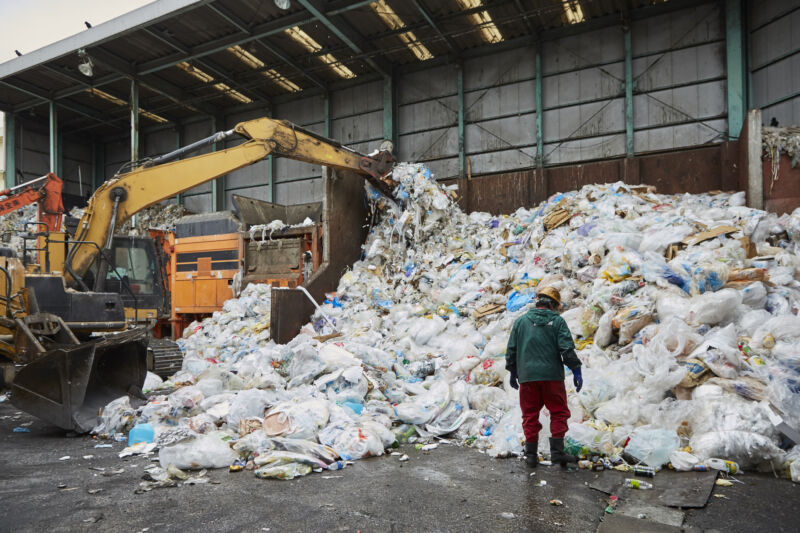
Island Press is “the nation’s leading publisher on environmental issues.” In its latest release, Thicker than Water, Erica Cirino, a photojournalist and licensed wildlife rehabilitator, explores what becomes of plastic—all 8 billion or so tons of it that humans have manufactured in the last 70-ish years.
Plastic’s greatest strength is also its greatest flaw: it takes eons to break down. It breaks apart, into smaller and smaller micro- and nano-sized particles. But unlike natural materials like wood and glass, plastic doesn’t break down into its constituent chemicals. Those micro- and nano-sized particles are still plastic. According to Alice Zhu, a graduate student studying plastics at the University of Toronto, this is because the carbon-carbon bonds that form the backbone of most plastic polymers require an immense amount of energy to break apart. And because these bonds are in synthetic arrangements, there are no microorganisms that can break most of them down (yet).
The big asymmetry
There is a marked disconnect between how long plastic sticks around and how long we get utility from it. Many single-use items, like straws and cutlery, are used for only minutes; thin plastic bags, like those needlessly wrapped around produce and almost everything we order online (and even plastic cutlery), are immediately thrown away. This thin plastic is made of low-density polyethylene, which is the most difficult kind to recycle and emits more climate-warming methane and ethylene when exposed to sunlight than other, harder types of plastic. It is also one of the most commonly produced.
Cirino’s account begins as an easy-enough read. She starts with a first-person narrative of her three-week boat trip on the Christianshavn from Los Angeles to Honolulu, a route that took her through the Great Pacific Garbage Patch. This is only one of the garbage patches that has accumulated on the edge of the eastern North Pacific Gyre; there is another, smaller garbage patch on the west side of the Gyre, off the coast of Japan. The patches are “at least one thousand nautical miles in any given direction from landmasses inhabited by humans and their plastic societies.”
The plastic the crew picks up ranges from “ghost” fishing gear—tangles of plastic ropes and nets discarded by fishing vessels that continue to entrap, maim, and kill marine life as they float along—to multicolored micro- and nano-plastics submerged below the surface. These tiny pieces are dangerous enough on their own; when marine animals ingest them, they block the movement of food through their digestive tracts so the animals eventually starve to death.
But in addition to the toxic manufacturing chemicals and additives that are an inherent part of the plastic, these particles also act as vehicles for other poisonous substances—pesticides, heavy metals, pathogenic bacteria and viruses—that latch onto their uneven surfaces. As the plastic is buffeted around by wind and waves and broken into these smaller and smaller pieces, it also releases methane into the atmosphere. And the pieces are in freshwater, so we get to drink them as well.

